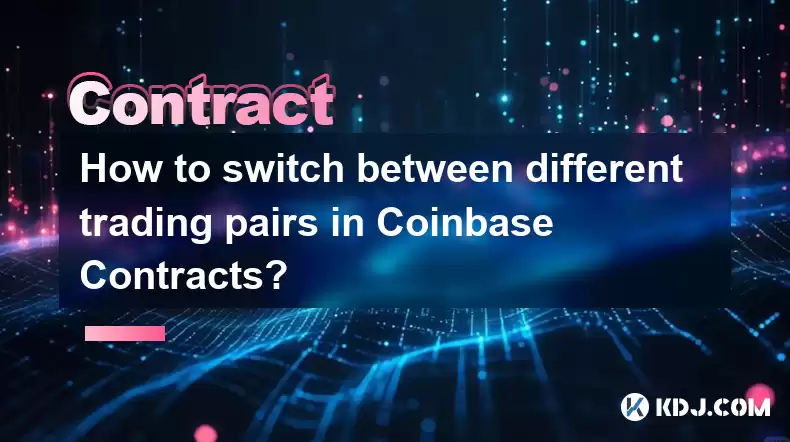-
 Bitcoin
Bitcoin $116700
0.24% -
 Ethereum
Ethereum $3973
4.34% -
 XRP
XRP $3.283
7.68% -
 Tether USDt
Tether USDt $1.000
0.01% -
 BNB
BNB $789.8
2.27% -
 Solana
Solana $176.2
3.31% -
 USDC
USDC $0.9999
0.00% -
 Dogecoin
Dogecoin $0.2238
5.14% -
 TRON
TRON $0.3389
-0.51% -
 Cardano
Cardano $0.7907
4.03% -
 Stellar
Stellar $0.4527
10.02% -
 Hyperliquid
Hyperliquid $41.07
4.27% -
 Sui
Sui $3.794
1.77% -
 Chainlink
Chainlink $19.49
10.40% -
 Bitcoin Cash
Bitcoin Cash $580.9
0.74% -
 Hedera
Hedera $0.2617
4.32% -
 Avalanche
Avalanche $23.41
3.67% -
 Ethena USDe
Ethena USDe $1.001
-0.03% -
 Litecoin
Litecoin $122.4
1.38% -
 Toncoin
Toncoin $3.364
1.49% -
 UNUS SED LEO
UNUS SED LEO $8.988
0.37% -
 Shiba Inu
Shiba Inu $0.00001295
2.82% -
 Uniswap
Uniswap $10.62
5.75% -
 Polkadot
Polkadot $3.922
4.46% -
 Dai
Dai $1.000
0.01% -
 Bitget Token
Bitget Token $4.494
2.15% -
 Monero
Monero $268.0
-1.30% -
 Cronos
Cronos $0.1523
3.68% -
 Pepe
Pepe $0.00001127
4.43% -
 Aave
Aave $285.4
4.85%
How to switch between different trading pairs in Coinbase Contracts?
Coinbase Contracts requires closing a position before opening a new one in a different trading pair; understanding order types, fees, slippage, and risk management are crucial for efficient transitions.
Mar 26, 2025 at 02:01 am

Key Points:
- Coinbase Contracts currently doesn't offer direct "switching" between trading pairs in the traditional sense. Instead, you close your existing position and open a new one in the desired pair.
- Understanding order types and managing your positions are crucial for efficient trading.
- The process involves closing your current trade, analyzing the new pair, and then placing a new trade.
- Careful consideration of fees and slippage is necessary when switching between pairs.
How to Switch Between Different Trading Pairs in Coinbase Contracts?
Unlike some centralized exchanges that allow seamless switching between trading pairs within a single interface, Coinbase Contracts operates differently. There isn't a button or function to directly "switch" from one trading pair (e.g., BTC/USD) to another (e.g., ETH/USD). Instead, the process involves a series of steps: closing your current position and then opening a new one in your desired pair. This approach requires a more deliberate and strategic approach to managing your trades.
First, you must fully understand your current position. What is your entry price? What is your current profit or loss? Knowing these figures is essential before making any changes. Misunderstanding your position can lead to unexpected losses. Take your time to review your open order details within the Coinbase Contracts platform.
Next, you need to close your existing position. This involves either selling your long position or buying back your short position. The exact method will depend on your current trade. This action concludes your trade in the original pair. Remember that fees apply to closing positions, so factor this cost into your trading strategy.
Before opening a position in a new trading pair, you need to perform thorough market research. Analyze the price charts, trading volume, and any relevant news impacting the new pair you're considering. This diligent research is vital to making informed decisions and mitigating risk. Rushing into a new trade without analysis can be detrimental.
Now, you're ready to open a new position in your selected trading pair. Coinbase Contracts offers various order types, such as market orders and limit orders. Market orders execute immediately at the current market price, while limit orders allow you to set a specific price at which you want to enter the trade. Choosing the right order type is crucial for executing your strategy effectively.
Remember to manage your risk appropriately. This involves setting stop-loss orders to limit potential losses and take-profit orders to secure profits. These orders help automate your exit strategy, minimizing emotional trading and maximizing your chances of success. Coinbase Contracts provides tools to easily implement these orders. Proper risk management is crucial for long-term success in cryptocurrency trading.
Leverage is a powerful tool, but also carries significant risk. Understanding how leverage amplifies both profits and losses is paramount. Avoid using excessive leverage, especially when switching between pairs, as this can quickly lead to substantial losses. Always trade responsibly and within your risk tolerance.
Slippage, the difference between the expected price and the actual execution price, can impact your trades, especially during volatile market conditions. Be aware of slippage and consider its potential impact when switching between pairs. High volatility increases the likelihood of significant slippage.
Switching between pairs is a regular aspect of active trading strategies. However, it's essential to execute these transitions methodically. Avoid impulsive decisions and always prioritize a well-defined trading plan. Remember that consistency and discipline are key to successful trading.
Frequently Asked Questions:
Q: Can I switch between trading pairs instantly on Coinbase Contracts?
A: No, Coinbase Contracts doesn't allow instant switching. You must close your existing position before opening a new one in a different pair.
Q: What are the fees involved in switching between trading pairs?
A: You'll incur fees for closing your initial position and opening a new one. The exact fees depend on Coinbase's fee structure and the volume of your trades.
Q: Are there any limitations on how frequently I can switch trading pairs?
A: There are no explicit limitations on the frequency of switching pairs, but frequent switching could increase transaction costs and potentially lead to losses due to poor decision-making or market volatility.
Q: What order types are available when switching to a new pair?
A: Coinbase Contracts offers market orders and limit orders. Market orders execute immediately at the current market price, while limit orders allow you to specify the price at which you want to enter the trade.
Q: How can I minimize losses when switching between trading pairs?
A: Thorough research, proper risk management (including stop-loss orders), understanding leverage, and avoiding impulsive decisions are key to minimizing losses when switching between pairs.
Q: Does Coinbase Contracts offer any tools to assist in switching between pairs?
A: While there isn't a dedicated "switch" function, Coinbase Contracts provides tools for managing orders, setting stop-loss and take-profit orders, and accessing market data to aid in informed decision-making when transitioning between trading pairs.
Disclaimer:info@kdj.com
The information provided is not trading advice. kdj.com does not assume any responsibility for any investments made based on the information provided in this article. Cryptocurrencies are highly volatile and it is highly recommended that you invest with caution after thorough research!
If you believe that the content used on this website infringes your copyright, please contact us immediately (info@kdj.com) and we will delete it promptly.
- Coinbase, Cosmos, and dYdX: Navigating the Crypto Currents
- 2025-08-09 06:30:16
- BNB Price, Altcoins, and Predictions: What's the Buzz?
- 2025-08-09 06:30:16
- Crypto Presale Projects Primed for Gains in 2025: A New Yorker's Take
- 2025-08-09 06:50:15
- Ruvi AI: The Millionaire Maker Poised for a Price Spike?
- 2025-08-09 06:50:15
- Cold Wallet, CoinMarketCap, Cardano & XRP: Navigating Crypto's Next Big Wave
- 2025-08-09 07:10:15
- Hedera (HBAR) Price Surge: Market Cap Soars, What's Next?
- 2025-08-09 07:10:15
Related knowledge

What is the difference between realized and unrealized PNL on KuCoin?
Aug 09,2025 at 01:49am
Understanding Realized and Unrealized PNL on KuCoinWhen trading on KuCoin, especially in futures and perpetual contracts, understanding the distinctio...

How does KuCoin Futures compare against Binance Futures in terms of features?
Aug 09,2025 at 03:22am
Trading Interface and User ExperienceThe trading interface is a critical component when comparing KuCoin Futures and Binance Futures, as it directly i...

What is the distinction between mark price and last price on KuCoin?
Aug 08,2025 at 01:58pm
Understanding the Basics of Price in Cryptocurrency TradingIn cryptocurrency exchanges like KuCoin, two key price indicators frequently appear on trad...

What are the specific maker and taker fees on KuCoin Futures?
Aug 08,2025 at 08:28am
Understanding Maker and Taker Fees on KuCoin FuturesWhen trading on KuCoin Futures, users encounter two primary types of fees: maker fees and taker fe...

Can you explain the difference between cross margin and isolated margin on KuCoin?
Aug 09,2025 at 02:57am
Understanding Margin Trading on KuCoinMargin trading on KuCoin allows traders to borrow funds to increase their trading position beyond their actual c...

How can I open a long position on KuCoin Futures?
Aug 09,2025 at 02:07am
Understanding KuCoin Futures and Long PositionsOpening a long position on KuCoin Futures means you are speculating that the price of a cryptocurrency ...

What is the difference between realized and unrealized PNL on KuCoin?
Aug 09,2025 at 01:49am
Understanding Realized and Unrealized PNL on KuCoinWhen trading on KuCoin, especially in futures and perpetual contracts, understanding the distinctio...

How does KuCoin Futures compare against Binance Futures in terms of features?
Aug 09,2025 at 03:22am
Trading Interface and User ExperienceThe trading interface is a critical component when comparing KuCoin Futures and Binance Futures, as it directly i...

What is the distinction between mark price and last price on KuCoin?
Aug 08,2025 at 01:58pm
Understanding the Basics of Price in Cryptocurrency TradingIn cryptocurrency exchanges like KuCoin, two key price indicators frequently appear on trad...

What are the specific maker and taker fees on KuCoin Futures?
Aug 08,2025 at 08:28am
Understanding Maker and Taker Fees on KuCoin FuturesWhen trading on KuCoin Futures, users encounter two primary types of fees: maker fees and taker fe...

Can you explain the difference between cross margin and isolated margin on KuCoin?
Aug 09,2025 at 02:57am
Understanding Margin Trading on KuCoinMargin trading on KuCoin allows traders to borrow funds to increase their trading position beyond their actual c...

How can I open a long position on KuCoin Futures?
Aug 09,2025 at 02:07am
Understanding KuCoin Futures and Long PositionsOpening a long position on KuCoin Futures means you are speculating that the price of a cryptocurrency ...
See all articles

























































































